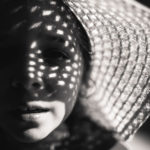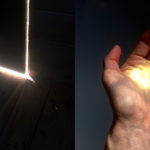“If you wish for light, be ready to receive light.” Rumi
As the season of gift-giving fast approaches, I’ve been thinking about the gifts I’ve received this year – images graciously given to me by my trusty old camera.
I’ve been interested in the practice of contemplative photography for a while now, and through it, continue to discover new and surprising things about this craft. A few years ago I came across The Little Book of Contemplative Photography by Howard Zehr, a book I have come back to again and again, not only because it is a quick and easy read, but because of the wisdom contained in its pages.
There is a particular chapter in this book that continually challenges me and makes me rethink my approach to photography. In this chapter, Zehr discusses the language and metaphors of photography and how aggressive and predatory they are. History shows that photography was once considered a gentle and respectful art, but its image as an art form became much more aggressive when small handheld cameras were introduced in the 1880s. It was around this time that people started going on photo shoots, carrying their arsenal of equipment, aiming their camera, taking their pictures and capturing their subject…metaphors that gradually became deeply embedded in our culture and consciousness. Before long, advertisers were marketing camera products that would ‘shoot to kill’ and camera store services that would ‘blow you away’. We began to use telephoto lenses and, more recently, smart phones to covertly photograph people. This shift, where the act of photographing became something of a hunt, has had a massive impact on the way we practise photography today.
When I first read about this idea, I’d been learning photography for a couple of years, so naturally I began to consider this in relation to my work and my process. I’d certainly been striving to ‘capture’ my children with my camera and getting frustrated when I didn’t get what I wanted or when I got something ‘wrong’. This put me in the position of taker, not receiver, and of triumphant predator when I did get something ‘good’.
But, the reality is, as Zehr quite simply points out, that when we photograph, we do not actually reach out and take anything. Light is reflected off our subject and enters through our camera’s lens, projecting a picture. So, essentially, the image is being received, not taken. And for me, here lay a secret to experiencing photography in a new and more profound way: I could open myself up to receiving images; I could change my perspective so that I no longer viewed images as trophies, but as gifts.
So where did this leave planning a conceptual photo session or the discipline of hunting out and capturing an image? Exactly where they belong, in their perfect time and place. Because whatever the situation, as we stand behind our camera we have an opportunity to experience new possibilities. We can do that by recognising that there is so much more to photography than our skill and our equipment – or, as Zehr so aptly puts it, we can shift our perspective so that we approach our art making with ‘wonder, respect and humility’. In other words, instead of seeing photography as a conquest, we can see it as contemplation; instead of seeing it as an exposé, we can see it as a revelation; instead of being concerned with control, we can embrace surprise.
No doubt, we’ve all experienced photographic surprises – sometimes by sheer accident (like when we unintentionally press the shutter) or sometimes simply because an image was unexpected (like when we think we didn’t ‘get’ anything good, but are later surprised to find that we did). But what interests me most is not this lack of control; rather, this concept of awe and humility, as a mindset and approach towards art making in general. By visualising myself receiving rather than taking images, I have been continually taken aback by what light has revealed inside my camera. I’ve relaxed. I’ve opened myself up to mystery. I’ve not always been given what I wanted, but what needed to be expressed was expressed in a new and surprising way. This surrender has become a very sweet part of my practice. Because it’s not only the unexpected images that are gifts – they are all gifts.
Of course, this change in attitude is easier said than done. Ironically, it takes a form of conscious effort to remember to let go, and even now, though I’ve intellectually understood the concept, I sometimes fall back into rigid ways of thinking. But whatever happens, the intention is set: to place myself in a position of receptivity and be surprised by what’s out there. As Jay Maisel once said, ‘The pictures are everywhere. If you’re open, they will find you.’ I try to be aware but not anxious because, at the end of the day, I am just a tiny part of the equation. There is something bigger, more magical and mysterious that takes place when my hands get a hold of the camera – something I can’t actually control.
I was recently amazed to discover that one of my favourite photographers, Sally Mann, had made references to this mystery and magic, and that she herself viewed photography as a humble act of receiving. In Immediate Family, she wrote, ‘At times, it is difficult to say exactly who makes the pictures. Some are gifts to me from my children: gifts that come in a moment as fleeting as the touch of an angel’s wing. I pray for that angel to come to us when I set the camera up, knowing that there is not one good picture in five hot acres. We put ourselves into a state of grace we hope is deserving of reward, and it is a state of grace with the Angel of Chance.’
And so, as the year draws to a close and a new one begins…whether you are a street photographer or a still life photographer, whether you photograph landscapes or your own family, and no matter what camera you use…there are gifts waiting for you. Be open to receiving them, and they will find you.
About Author

- Romina is a fine art photographer from Sydney, Australia, where she lives with her husband and four children. In her process, she has been amazed to find that all photos are, in fact, self-portraits, and within her images she continues to discover stories that she had long forgotten.
Latest stories
 Romina MandriniDecember 21, 2016The Gift of Receiving
Romina MandriniDecember 21, 2016The Gift of Receiving Romina MandriniJuly 12, 2016In Spirit and Truth: An Interview with Laura Valenti
Romina MandriniJuly 12, 2016In Spirit and Truth: An Interview with Laura Valenti Romina MandriniMay 9, 2016Through the Looking Glass by Romina Mandrini
Romina MandriniMay 9, 2016Through the Looking Glass by Romina Mandrini








Magic!
Thank you, dear friend! xx
Wise words and stunning imagery to go with it! ✨
Sincere thanks, Susanne!
Absolutely can relate and love everything about this. I am a food/still life photographer from Arizona, and admire your work so much <3 this post is <3<3
Thank you so much, Stephanie! I’m so happy this resonated with you. Your work is beautiful!
Absolutely beautiful